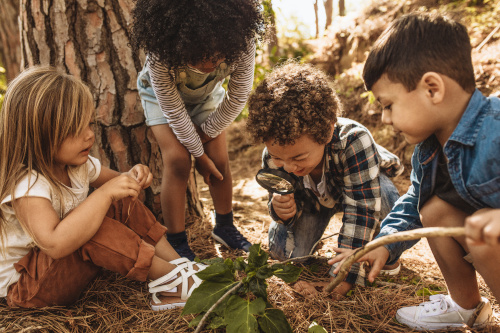
The pandemic has augmented concerns about learning loss, leading many schools and districts to examine their summer learning programs and help students strengthen progress in various academic areas.
Here’s how seven educators are tackling summer learning in fun and engaging ways for their students.
Accelerating Learning Through Fun
At Brooklyn Preschool of Science, our six-week summer session is geared for 2- to 4-year-olds. From September through June, we teach one physical science or life science theme per month. In the summer, we focus on a theme a week to create an intensive, comprehensive, and condensed version of the themes children love, like Superhero Science and Roar Roar Dinosaur.
Our summer session includes more outdoor play than our regular academic year, and we also focus on themes that fit the season. One of these summer themes is Oceans Blue, where the classroom becomes like an aquarium. We bring in sea stars, fiddler crabs, and horseshoe crabs. Children study water and its properties, including absorption, and they create their own boats as they learn about buoyancy and stability.
Parents can sign kids up for as few or as many weeks as they want, which gives them the opportunity to focus on what their kids need and also what they’ll enjoy the most. If a kid likes bugs, their parents can sign them up for Bug Week so they can have a hands-on experience with mega mealworms and see what it’s like to have their own exoskeleton. In my experience, nothing accelerates learning like kids having fun.
Carmelo Piazza is the executive director/educational director of Brooklyn Preschool of Science. He can be reached at carmelo@brooklynpreschoolofscience.com.
Robots as Summer Enrichment
For our summer enrichment program, I will be teaching computer science to all students in attendance. I will be using the KIBO Robot Kit to extend the learning of the students in K-3rd in the following ways:
Rising kindergarteners and kindergarteners will be programming their robots to move and dance so that it spells out their name on the floor. They will then use the turntable art platform attached to the robot to show the letters of their name as it spins for their dance.
1st graders will be learning about the parts of a plant as a preview for 2nd grade science. They will then program KIBO to move to the plant parts that are attached to the floor. I have cards that they will pick from that either have the part name or a description of the part as a hint as to which part they move the robot toward next.

